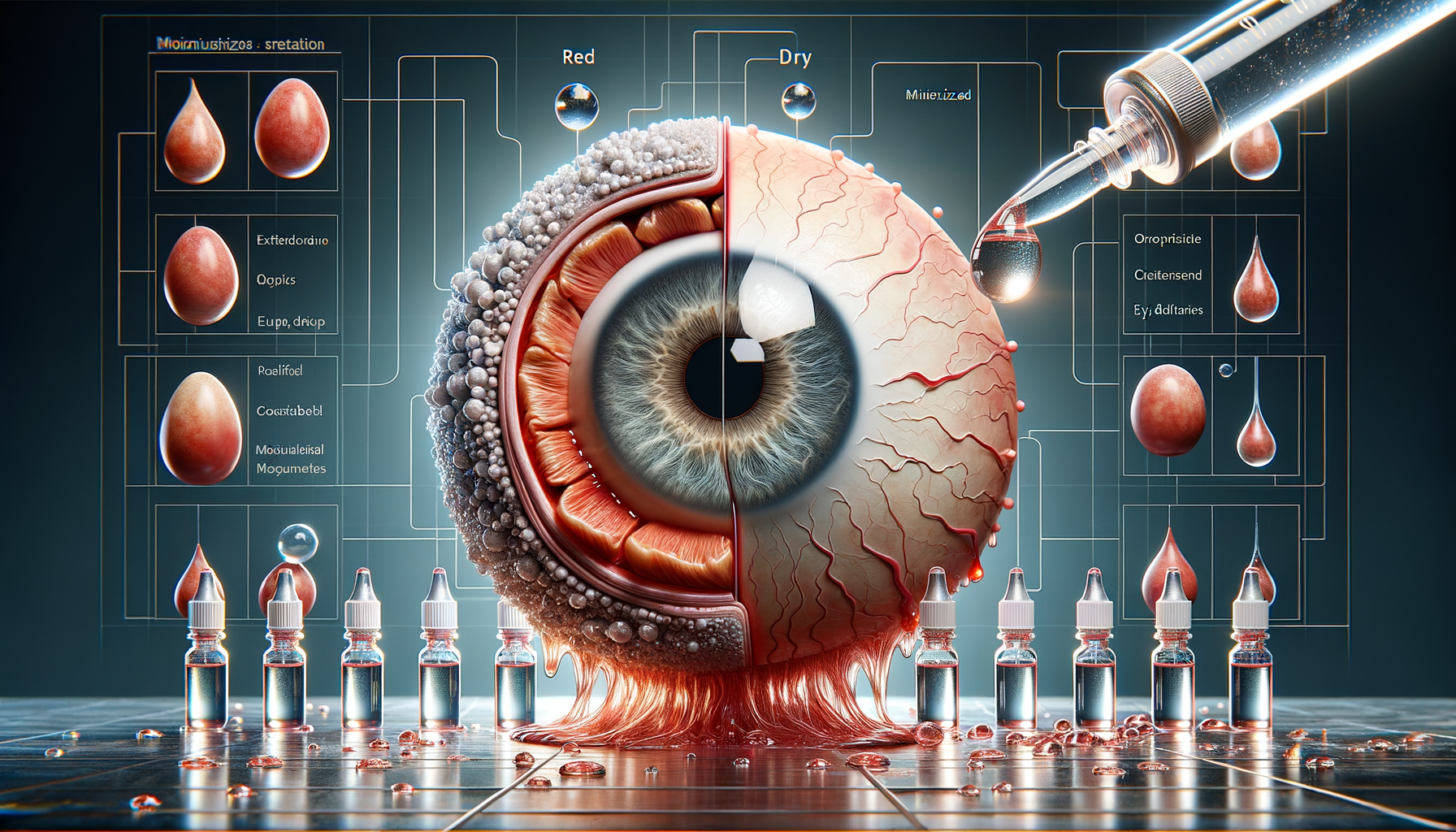Introduction to Dry Eye Syndrome
Dry eye syndrome is a prevalent condition affecting millions worldwide. It occurs when the eyes do not produce enough tears or when the tears evaporate too quickly, leading to discomfort and vision issues. This condition can arise due to various factors such as aging, environmental conditions, or prolonged screen time. Understanding the importance of managing dry eyes is crucial, as untreated symptoms can significantly impact one’s quality of life.
Traditional Dry Eye Treatments
The cornerstone of dry eye treatment has long been the use of artificial tears. These over-the-counter eye drops aim to supplement the natural tear film, providing temporary relief from dryness and irritation. Artificial tears vary in composition, with some formulated to mimic the natural tears more closely, while others aim to reduce the evaporation of tears.
When choosing a product, consider the following:
- Preservative-free options for sensitive eyes
- Thicker formulations for nighttime use
- Products with additional lubricants for severe cases
While these drops are effective for mild cases, they may not suffice for more severe dry eye conditions, prompting the need for advanced treatment options.
Advanced Treatments for Dry Eyes
For individuals with persistent dry eye symptoms, doctors may recommend more advanced treatments. These can include prescription medications that reduce inflammation of the eyelids or stimulate tear production. Additionally, punctal plugs, tiny devices inserted into the tear ducts, can help retain tears on the eye surface longer.
Other innovative treatments involve the use of intense pulsed light (IPL) therapy, which targets the meibomian glands to improve oil production in tears, and thermal pulsation treatments that unclog blocked glands. These therapies are gaining traction as effective solutions for chronic dry eye sufferers.
New Developments in Dry Eye Treatment
Recent advancements in dry eye treatment focus on addressing the underlying causes rather than merely alleviating symptoms. Researchers are exploring the potential of biologics, which are derived from natural sources and can target specific components of the immune system involved in dry eye inflammation.
Another promising area is the development of eye drops containing nanotechnology to enhance drug delivery directly to the ocular surface. These innovative solutions aim to provide longer-lasting relief and potentially reduce the need for frequent application of traditional drops.
Conclusion: Navigating Dry Eye Treatments
With the array of treatments available, managing dry eye syndrome requires a personalized approach. Consulting with an eye care professional can help determine the most suitable treatment plan, considering the severity of the condition and individual lifestyle factors. As research continues to advance, the future holds promising possibilities for more effective and targeted dry eye therapies, offering hope for those seeking relief from this common yet challenging condition.




Leave a Reply